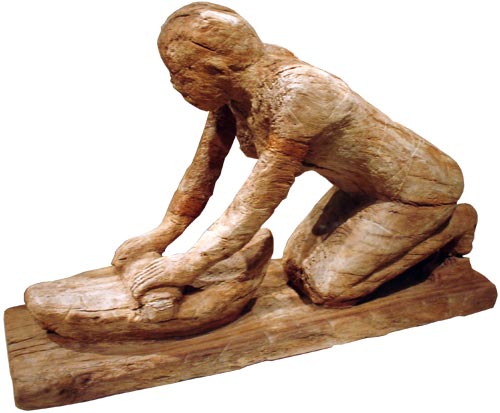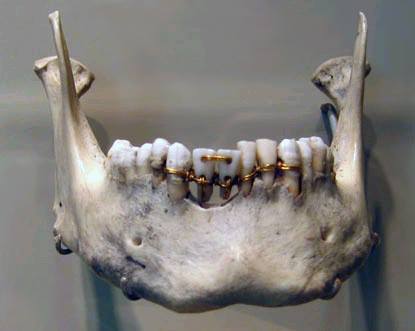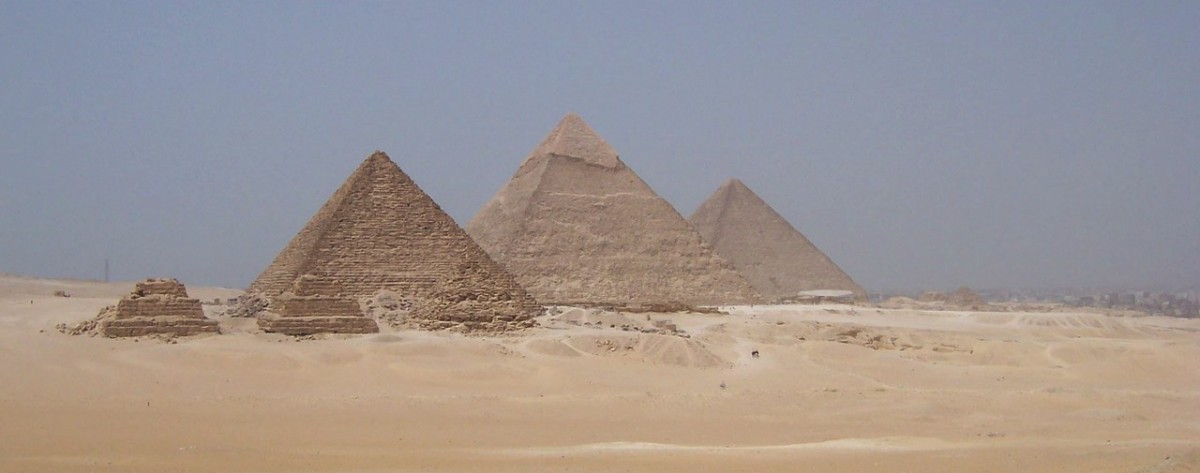Hesy-Ra is the first dentist in History we know by name thanks to Egyptians writings -even though those writings were recorded in the hieroglyphic script- and also thanks to their practical online translator, Egyptian-Demotic-Greek, called the Rosetta Stone, which has allowed us to understand Egyptian hieroglyphs nowadays.


That’s how we know Hesy-Ra was a very important dentist at the court in 2650 BC; so important that his title was “Chief of Dentists and Physicians” and was buried in a mastaba next to the pyramid of pharaoh Djoser in Saqqara.
Like us, Egyptians had a wide variety of dental problems. One of the most important ones, especially in more antique times, was dental erosion. A diet rich in hard to eat and high fibre foods, besides the tradition of mixing sand to grains so they grinded better, increased this problem. On the other hand, consumption of these high fibre elements also helped teeth cleaning. This leads to the emergence of abscesses and cysts, as dental pulp was left with no protection. On the contrary, tooth decay were not so common during the first periods, mainly thanks to their diet.


As time goes by, Egyptian diet -based initially on high consumption of proteins- changes since the population adopts a sedentary lifestyle and the consumption of carbohydrates rises. However, at the moment Greeks arrive in the 4th century BC, the situation gets definitely worse as the use of fermentable grains (white breads) and honey become widespread, and so does caries, mainly amongst the higher social class.


There are also signs of other dental diseases in Egyptian civilization like gingivitis and of course dental deformities in every social stratum, and so cures like drilling to drain abscesses were performed.
Fortunately, Egyptians liked supplying documentary evidence on what they did and, though this was obviously a long time ago, there is still something left. Ebers Papyrus, written in hieratic, a cursive Egyptian writing, is one of the oldest medical records known and contains 877 sicknesses of different medicine fields, amongst them, Odontology, and results surprising the huge knowledge the had on human anatomy and, especially, on the medicinal properties of the plants they used as remedies.
For instance, we find three formulas containing willow to relieve dental pain, amongst other substances. The bark of the willow contains salicin, a chemical substance similar to acetylsalicylic acid, so it may work as a painkiller or anti-inflammatory.
Another interesting document is Smith Papyrus, the oldest surgery text we know. It contains 48 procedures to carry out in case of trauma. For example, this is what an Egyptian dentist should do in case of mandible dislocation:
If you examine a man having a dislocation [wenekh] in his mandible [aret] and you find his mouth open and his mouth does not close for him, you then place your finger[s] [? thumb] on the back of the two rami of the mandible inside his mouth, your two claws [groups of fingers] under his chin, you cause them [i.e. the two mandibles] to fall so they lie in their [correct] place.
All these treatments were complemented with a great variety of spells and psalmodies that, as “scientific doctors” used to say then, “don’t heal, either hurt”.
There was seemly no widespread dental hygiene, though in several research, archaeologists found a kind of sticks used as toothbrushes, ointments made of burnt eggshells, ashes, dust, ox hoofs, pumice stones and a mixture of essences, incenses, myrrh, cinnamon and honey they solidified in grains to obtain fresh breath and take care of their teeth.
By the way, doctors were paid by the State and medicines, including dental remedies, were free for the people.
The lifestyle of that period commonly favoured tooth’s fractures and loss that were sometimes fixed with primitive bridges made with pieces coming from deceased or engraved shells which were tied with gold threads to contiguous teeth. However, archeologists and dentists still do not agree on the fact these treatments were practised with dead of alive patients, since it seems they could not bite properly. Because Egyptians gave importance to achieve eternal life with the full body, tt could be also practised during embalming. For sure they were not going to appear in front of the gods with no teeth!


If you are interested in going back in time, you can click on our post First Dental Treatments.



